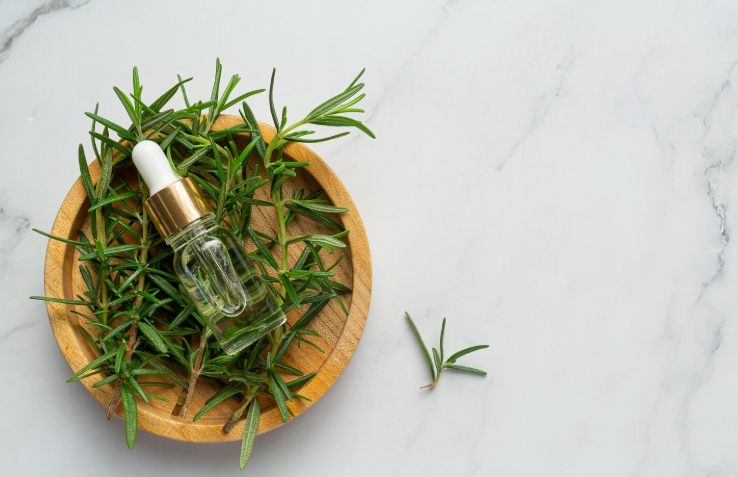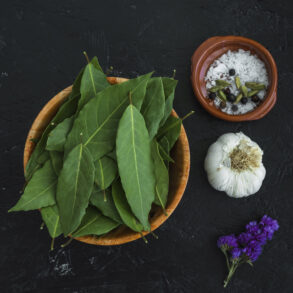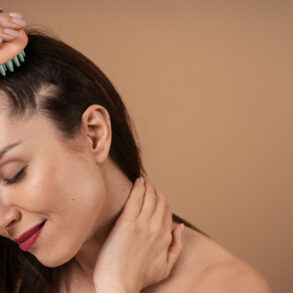Hair fall has become one of the most discussed beauty and health concerns in the modern world. From hormonal imbalance to pollution, from stress to nutrient deficiencies—many factors can trigger it. But as more people move away from synthetic treatments, the spotlight has shifted toward nature’s time-tested solutions. Two of the most talked-about herbal oils today are Bhringraj oil and Rosemary oil.
Both are celebrated for their ability to stimulate hair growth, strengthen follicles, and rejuvenate the scalp. Yet, each comes from a different healing tradition: Bhringraj oil from Ayurveda and Rosemary oil from Western herbal science and aromatherapy.
So, the question arises Bhringraj vs Rosemary oil: which is better for hair fall?
Let’s explore their origins, composition, benefits, and scientific evidence to uncover which oil truly stands out for promoting healthy, thick, and strong hair.
1. Understanding the Basics of Hair Fall
Before comparing the two oils, it’s essential to understand why hair fall occurs in the first place. Ayurveda and modern trichology (the science of hair and scalp) offer complementary insights.
According to Ayurveda
Hair (Kesha) is a by-product of bone tissue (Asthi Dhatu).
When Vata dosha (dryness) and Pitta dosha (heat) become imbalanced, they weaken hair roots and disturb natural oil secretion, leading to shedding and thinning.
Common Ayurvedic causes:
- Irregular diet and poor digestion.
- Excessive stress and lack of sleep.
- Overexposure to heat, pollution, or harsh chemicals.
- Hormonal imbalance and nutritional deficiency.
According to Modern Trichology
Hair loss is typically linked to:
- DHT (dihydrotestosterone) sensitivity in follicles.
- Nutritional gaps (iron, zinc, B12).
- Stress-induced shedding (telogen effluvium).
- Scalp inflammation and poor circulation.
Both Ayurveda and science agree: healthy hair starts with a healthy scalp and balanced internal systems. This is where Bhringraj and Rosemary oils come into play — each tackling the problem from a unique angle.
2. What Is Bhringraj Oil?
Ayurvedic Heritage
Bhringraj, scientifically known as Eclipta alba, is one of Ayurveda’s most revered herbs, often called “Keshraj” — the King of Hair.
It’s classified under Keshya Dravyas (substances that promote hair growth) in classical Ayurvedic texts like Bhavaprakasha Nighantu and Charaka Samhita.
Sanskrit Properties:
| Property | Description |
|---|---|
| Rasa (Taste) | Tikta (bitter), Katu (pungent) |
| Guna (Quality) | Laghu (light), Ruksha (dry) |
| Virya (Energy) | Ushna (warming) |
| Vipaka (Post-digestion) | Katu (pungent) |
| Dosha Effect | Pacifies Vata and Kapha, balances Pitta |
How It Works
In Ayurveda, Bhringraj acts as a Rasayana (rejuvenator) — nourishing the scalp, strengthening roots, and improving circulation. It cools excessive Pitta (heat), often linked to premature greying and hair thinning.
Scientific Backing
Modern research supports these claims:
- A 2008 study in the Journal of Ethnopharmacology found that Bhringraj extract significantly increased hair follicle size and count in lab subjects, suggesting it prolongs the anagen (growth) phase.
- Another 2011 study confirmed its anti-inflammatory and antioxidant effects on the scalp, reducing oxidative damage that leads to hair fall.
Thus, Bhringraj oil’s holistic action makes it one of the most proven Ayurvedic solutions for hair fall prevention and regrowth.
3. What Is Rosemary Oil?
Western Herbal Origins
Rosemary (Rosmarinus officinalis), a fragrant Mediterranean herb, has been used since ancient Greece for memory and vitality. In modern times, it’s gained global recognition as a potent hair growth stimulant due to its circulation-boosting and antimicrobial properties.
Composition & Properties
Rosemary oil contains key bioactive compounds such as:
- Carnosic acid – known to heal and regenerate scalp tissue.
- 1,8-Cineole – improves blood flow and oxygen delivery to follicles.
- Rosmarinic acid – antioxidant and anti-inflammatory.
Scientific Validation
The biggest turning point came in 2015, when a landmark study published in Skinmed Journal compared Rosemary oil with Minoxidil (2%), a popular pharmaceutical hair growth treatment.
After six months, results showed that Rosemary oil performed almost equally well as Minoxidil in promoting hair growth — but with fewer side effects like itching and scalp irritation.
This discovery made Rosemary oil one of the most trusted natural alternatives for hair loss in Western trichology.
4. Comparing Ayurvedic and Trichological Perspectives
| Aspect | Bhringraj Oil | Rosemary Oil |
|---|---|---|
| Origin | Ayurveda (India) | Western Herbalism (Mediterranean) |
| Primary Action | Nourishes, strengthens roots, balances scalp doshas | Stimulates follicles, boosts circulation |
| Scientific Validation | Enhances follicle size and density (J. Ethnopharmacology, 2008) | Comparable to Minoxidil for regrowth (Skinmed, 2015) |
| Dosha Balance | Pacifies Vata and Pitta | Reduces scalp inflammation |
| Smell & Feel | Earthy, grounding | Herbal, cooling, invigorating |
| Best For | Chronic hair fall, dull or dry scalp | Early-stage thinning, oily scalp, poor blood flow |
This comparison gives us the foundation for answering the big question: Bhringraj vs Rosemary oil — which is better for hair fall?
The answer depends on the cause, hair type, and the user’s needs.
5. How Bhringraj Oil Prevents Hair Fall
Let’s examine how Bhringraj oil works on the scalp from both Ayurvedic and scientific angles.
A. In Ayurveda
- Cools Pitta: Excess heat leads to follicle damage. Bhringraj’s cooling effect soothes the scalp.
- Improves blood flow: Massaging it into the scalp increases Rakta Dhatu (blood tissue) circulation.
- Rejuvenates follicles: As a Rasayana, it restores vitality to weak roots.
- Removes buildup: Its mild detoxifying action clears dandruff and blockages in Srotas (hair channels).
B. In Modern Science
- Rich in flavonoids and wedelolactone, compounds that stimulate dermal papilla cells (the growth centers of hair).
- Its antioxidant enzymes neutralize free radicals responsible for follicular damage.
- It exhibits anti-inflammatory properties, reducing micro-irritations that contribute to hair thinning.
Together, these mechanisms explain why trichology experts increasingly recognize Bhringraj as one of the most scientifically sound Ayurvedic remedies for hair regrowth.
6. How Rosemary Oil Prevents Hair Fall
A. In Herbal Medicine
- Rosemary is a circulatory stimulant, increasing oxygen and nutrients to follicles.
- It reduces scalp infections with its natural antibacterial action.
- Its aroma reduces stress — an often-overlooked cause of hair shedding.
B. Scientific Mechanism
- Boosts Cellular Turnover: Carnosic acid encourages the repair of scalp tissue and follicular regeneration.
- Enhances Microcirculation: Like peppermint, it dilates blood vessels, improving nutrient delivery to roots.
- Blocks DHT (Dihydrotestosterone): Research suggests rosemary inhibits 5α-reductase, the enzyme that converts testosterone to DHT, a leading cause of pattern baldness.
This combination of actions makes Rosemary oil one of the most promising natural growth stimulants in modern trichology.
7. Bhringraj vs Rosemary Oil: Mechanism of Action
| Function | Bhringraj Oil | Rosemary Oil |
|---|---|---|
| Primary Mechanism | Nourishment and follicle rejuvenation | Stimulation and circulation enhancement |
| Best for Hair Fall Caused by: | Nutritional deficiency, dryness, heat, or stress | Hormonal imbalance, poor blood flow |
| Hair Type Suitability | Dry to normal scalp | Normal to oily scalp |
| Additional Benefit | Prevents greying, strengthens roots | Controls dandruff, boosts scalp clarity |
| Texture & Absorption | Heavier, rich in herbal compounds | Light, quickly absorbed |
| Use Frequency | 2–3 times per week | 3–4 times per week (diluted) |
Both oils target hair fall through different mechanisms — Bhringraj heals and nourishes, while Rosemary stimulates and activates.
Hence, combining them (in the right ratio) can create a balanced formula that addresses multiple causes of hair loss.
8. Traditional and Modern Ways to Use the Oils
A. Ayurvedic Method for Bhringraj Oil
- Warm the oil slightly in a bowl.
- Apply directly to the scalp using fingertips.
- Massage for 10–15 minutes in circular motions.
- Wrap a warm towel around the head for 30 minutes.
- Wash with herbal shampoo or Reetha–Shikakai cleanser.
Frequency: Twice weekly for best results.
B. Modern Aromatherapy Method for Rosemary Oil
- Dilute 5–10 drops of Rosemary essential oil in 2 tablespoons of a carrier (like coconut or jojoba oil).
- Massage onto the scalp for 5 minutes.
- Leave overnight or at least 2 hours.
- Rinse with mild, sulfate-free shampoo.
Frequency: Three times per week for ongoing stimulation.
C. Fusion Method – The Best of Both Worlds
To harness the full potential of Bhringraj and Rosemary oil, you can create a fusion blend.
DIY Bhringraj–Rosemary Hair Elixir
- 2 tbsp Bhringraj oil
- 1 tbsp Coconut oil
- 5 drops Rosemary essential oil
Warm gently, massage into scalp, leave overnight, and wash in the morning.
This blend combines Bhringraj’s deep nourishment with Rosemary’s follicle stimulation, making it one of the most effective home-based treatments for hair fall.
9. Scientific Studies: Comparing Bhringraj and Rosemary Oil Side-by-Side
Both Bhringraj and Rosemary oils have been tested for hair regrowth efficacy, though through different methodologies. Let’s look at what modern research reveals about each, side by side.
| Study | Oil Tested | Key Findings | Publication |
|---|---|---|---|
| 2008 – Journal of Ethnopharmacology | Bhringraj | Enhanced hair follicle count, increased growth rate, and improved pigmentation | J. Ethnopharmacol., 2008 |
| 2011 – Pharmacognosy Journal | Bhringraj | Shown to prolong anagen phase (active growth phase) | Pharmacognosy J., 2011 |
| 2015 – Skinmed Journal | Rosemary | Rosemary oil performed as effectively as 2% Minoxidil in stimulating growth after 6 months | Skinmed, 2015 |
| 2020 – International Journal of Trichology | Rosemary | Reduced DHT levels, improved scalp circulation | IJT, 2020 |
From this comparison, it’s evident that Bhringraj excels in nourishment and follicular rejuvenation, while Rosemary excels in stimulation and hormonal balance.
Hence, the conclusion isn’t about which is “better” overall, but which suits your scalp’s unique condition and cause of hair fall.
10. The Ayurvedic Viewpoint: Root Cause vs. Symptom Management
Ayurveda believes hair loss is not a disease but a symptom of internal imbalance.
When to Use Bhringraj Oil
- When your hair feels dry, brittle, or thin.
- When hair fall is linked to stress, lack of sleep, or overheating (Pitta aggravation).
- When you notice premature greying or dullness.
Bhringraj works from the inside out — not only nourishing the scalp but also calming the mind. Its cooling energy pacifies both Vata and Pitta, the doshas primarily responsible for hair loss.
When to Use Rosemary Oil
- When hair fall is due to poor circulation or clogged follicles.
- When the scalp is oily or prone to buildup.
- When early-stage thinning is visible.
Rosemary oil’s warming and stimulating nature makes it perfect for improving blood flow and nutrient delivery, key to follicular revival.
In Ayurvedic terms:
“Bhringraj heals, Rosemary activates.”
This makes them complementary rather than competitive — a truth that modern trichology increasingly recognizes.
11. Expert Opinions: Ayurvedic Doctors vs. Trichologists
Let’s hear how professionals from both worlds describe the benefits of these oils:
Dr. Rekha Patil, Ayurvedic Practitioner (India):
“In Ayurveda, we use Bhringraj as part of Rasayana therapy. It restores balance to the scalp and mind. Rosemary can be added for stimulation, but Bhringraj is the true foundation for long-term hair rejuvenation.”
Dr. Andrew Thompson, Trichologist (UK):
“Rosemary oil has shown remarkable clinical performance in stimulating new hair growth and improving scalp health. However, Bhringraj oil’s regenerative properties give it a unique advantage for chronic hair loss.”
Dr. Ananya Rao, Ayurvedic Cosmetologist:
“The ideal solution is synergy. A mix of both oils gives nourishment and stimulation — healing the root and activating new growth simultaneously.”
Hence, from both perspectives, Bhringraj vs Rosemary oil for hair fall isn’t about competition — it’s about combination for complete scalp health.
12. Practical Comparison: Real-World Benefits
| Criteria | Bhringraj Oil | Rosemary Oil | Best Use |
|---|---|---|---|
| Hair Growth Speed | Moderate, steady regrowth | Rapid stimulation | Combine both |
| Hair Texture Improvement | Adds shine and softness | Strengthens and thickens | Both effective |
| Dandruff Control | Excellent for dry flakes | Good for oily dandruff | Depends on scalp type |
| Premature Greying | Prevents and delays | Limited pigment benefit | Bhringraj preferred |
| Scalp Type | Dry/normal | Oily/combination | Use accordingly |
| Stress Relief | Calming and grounding | Energizing and refreshing | Rotate weekly |
| Scientific Validation | Strong Ayurvedic + Lab evidence | Modern trichological studies | Both proven |
This table shows that Bhringraj oil excels in nourishment and rejuvenation, while Rosemary oil delivers quick stimulation and improved circulation.
Together, they offer the perfect balance between ancient wisdom and modern efficacy.
13. Creating the Perfect Blend: Bhringraj + Rosemary Formula
Many trichologists and Ayurvedic experts now recommend combining both oils for a 360° solution.
DIY Ayurvedic-Trichology Hair Growth Oil
Ingredients:
- 2 tbsp Bhringraj oil (base)
- 1 tbsp Coconut oil (carrier)
- 5 drops Rosemary essential oil
- 1 drop Lavender oil (optional for aroma and relaxation)
Directions:
- Warm the blend slightly using a double boiler.
- Massage into scalp for 10 minutes.
- Leave overnight or at least 2 hours.
- Wash with a sulfate-free herbal shampoo.
Benefits:
- Deep nourishment from Bhringraj.
- Enhanced circulation from Rosemary.
- Stress reduction from Lavender.
This simple fusion is one of the best practical applications of Bhringraj vs Rosemary oil synergy.
14. Safety and Usage Guidelines
While both oils are natural, certain precautions ensure safe and effective use:
- Always dilute Rosemary essential oil with a carrier; it’s potent and can irritate the skin if used undiluted.
- Perform a patch test before full application.
- Pregnant women should avoid Rosemary essential oil due to uterine stimulation potential.
- Store oils in dark glass bottles away from sunlight to preserve potency.
When used correctly, these oils are among the safest and most effective natural remedies for hair loss management.
15. User Testimonials: Real Experiences
Priya, 29: “I had postpartum hair loss. Pure Bhringraj oil gave slow but steady results, making my hair thicker after 3 months.”
Amit, 35: “Rosemary oil reduced my scalp itch and gave me visible regrowth along the hairline.”
Neha, 40: “Combining both Bhringraj and Rosemary oil has been a game-changer. My hair feels nourished, and the shedding has almost stopped.”
Across user experiences, the pattern is clear — Bhringraj oil supports long-term hair recovery, while Rosemary oil gives a faster, visible boost.
16. Trichology-Supported Ayurvedic Routine for Hair Fall
| Step | Practice | Oil Used | Frequency |
|---|---|---|---|
| 1 | Warm oil head massage | Bhringraj + Rosemary | 2–3 times/week |
| 2 | Steam or hot towel therapy | Same blend | Once/week |
| 3 | Herbal wash (Reetha or Amla) | — | Twice/week |
| 4 | Diet rich in iron and vitamin C | — | Daily |
| 5 | Yoga: Sarvangasana, Balasana | — | Alternate days |
| 6 | Sleep 7–8 hours | — | Nightly |
Following this Ayurvedic-trichological routine provides cumulative benefits — improving not just scalp health but also mental calmness and body balance.
17. The Science of Synergy: Why Combining Oils Works Better
When you combine Bhringraj and Rosemary, you get two complementary mechanisms:
- Bhringraj nourishes and strengthens the follicle base (dermal papilla cells).
- Rosemary increases blood flow and oxygen to those follicles.
Scientific studies on polyherbal formulations show that multi-ingredient oils stimulate over 25% more follicular activity than single-herb oils.
This supports why experts now view Bhringraj vs Rosemary oil not as a debate, but as a partnership.
18. Common Myths Debunked
| Myth | Reality |
|---|---|
| “Rosemary works faster, so Bhringraj is outdated.” | False — Bhringraj targets the root cause, ensuring lasting results. |
| “Essential oils can be applied directly.” | False — Rosemary must always be diluted to prevent irritation. |
| “Natural oils can’t compete with Minoxidil.” | Incorrect — Studies show Rosemary oil performs comparably with fewer side effects. |
| “You need expensive Ayurvedic products.” | Not true — Pure, cold-pressed oils are enough if used consistently. |
Understanding these facts helps users choose and use both oils wisely for maximum benefit.
19. Key Takeaways
- Bhringraj oil (Eclipta alba) nourishes, strengthens, and balances the scalp — ideal for chronic or stress-induced hair fall.
- Rosemary oil stimulates circulation and DHT control — perfect for hormonal or early-stage thinning.
- When combined, they offer complete care: Bhringraj heals, Rosemary activates.
- Supported by Ayurvedic wisdom and trichological research, this duo represents a powerful, natural alternative to synthetic hair treatments.
Hence, in the question of “Bhringraj vs Rosemary oil: which is better for hair fall?”, the true answer is:
Use both—together, they’re unbeatable.
20. Conclusion: Ancient Roots, Modern Science
Hair fall isn’t just a cosmetic issue—it’s the body’s way of signaling imbalance. While synthetic solutions treat symptoms, Ayurveda and modern trichology together focus on the roots.
Bhringraj oil, with its cooling, nourishing power, and Rosemary oil, with its stimulating and regenerative ability, are two sides of the same healing coin.
For long-term results, patience, consistency, and mindful care are essential. When used properly, this Ayurvedic-scientific blend transforms your hair care ritual into a self-care ceremony one that honors both ancient wisdom and modern evidence.










